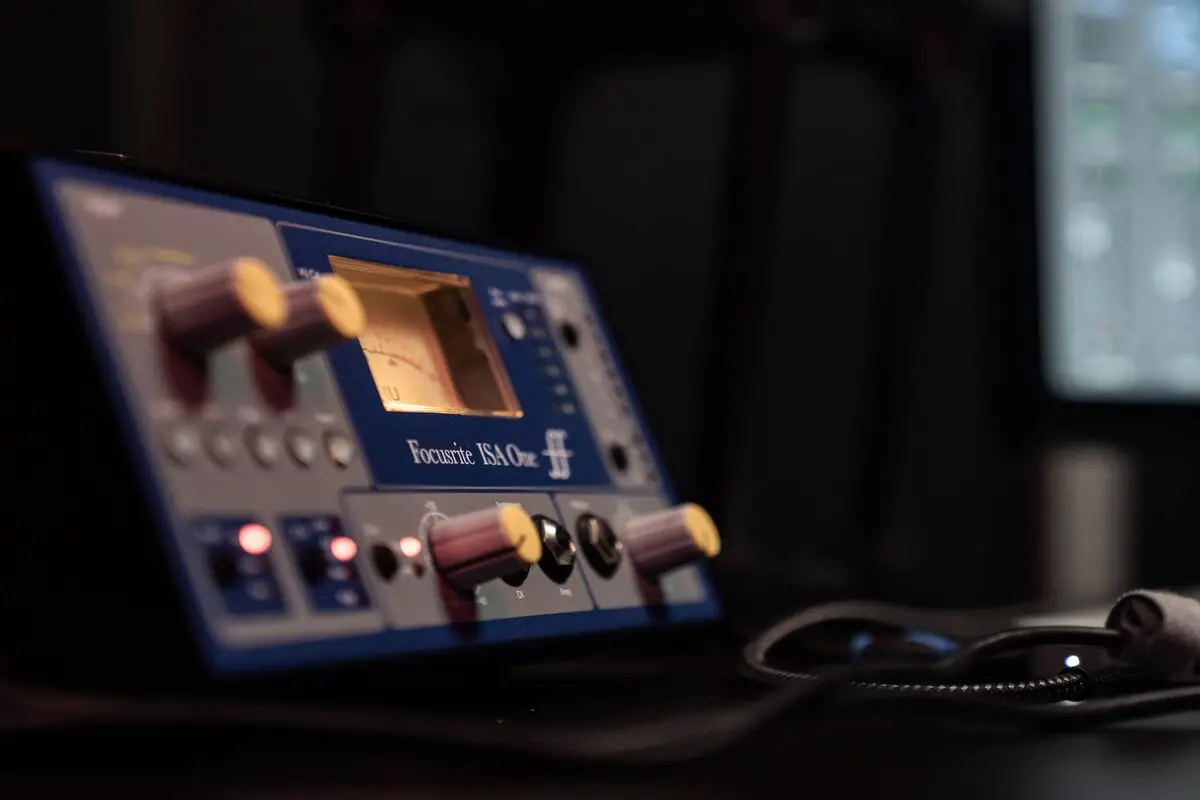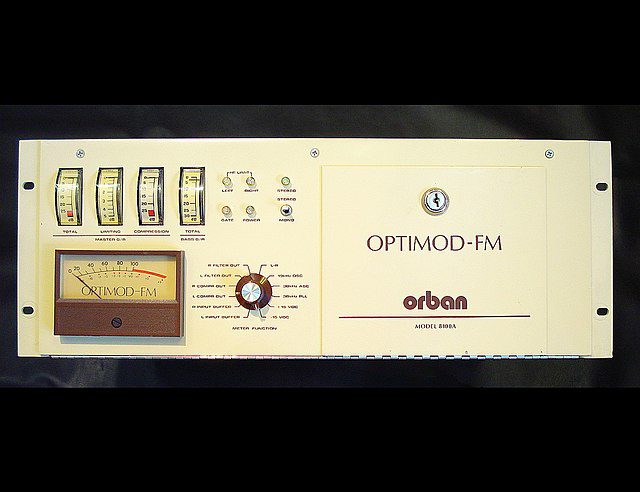Picture this: You’ve got your sick home studio set up, the vibes are flowing, and you’re ready to lay down some fire tracks. But then you hit record, only to find out your audio is weaker than a kitten’s purr. What’s missing, my friend, is the magic of a preamp!
So, what is a preamp in audio? In simple terms, a preamp is a small but mighty device that helps your audio signal go from meow to roar, amplifying the sound and ensuring it’s loud and clear. This electrifying post will take you on a journey through the world of preamps, from their key features to the pro favorites, all the way to debunking common misconceptions.
What is a preamp in audio? A preamp, short for preamplifier, is an electronic device that amplifies weak audio signals, such as those from microphones and instruments, to a level suitable for further processing or output.
What is a preamp?
A preamp, short for preamplifier, is essentially a gain wizard. It takes low-level audio signals (like the ones from your microphone or instrument) and turns up their volume to a level that’s ideal for further processing or output.

Picture this: You’re at a lively party, and you’re trying to have a conversation with someone across the room. Amidst all the noise, your voice just doesn’t carry. That’s your audio signal without a preamp. Now, imagine if you had a megaphone to amplify your voice. That’s what a preamp does for your audio signal.
Alright, let’s break it down even further. Here are some dos and don’ts when it comes to dealing with preamps:
| Dos | Don’ts |
|---|---|
| Do use a preamp to amplify weak signals | Don’t expect a preamp to fix poor recording techniques |
| Do choose a preamp that suits your specific needs | Don’t overlook the importance of a quality preamp in your audio setup |
| Do learn how to properly set gain levels on your preamp | Don’t max out the gain on your preamp, this can lead to distortion |
AKAI Professional MPK Mini MK3

AKAI Professional MPK Mini MK3
Why is a preamp essential for your audio setup?
Alright, so we’ve riffed on the ‘what’ and ‘how’ of preamps, but let’s jam on the ‘why’ for a bit. Why should a preamp be as essential in your audio setup as a killer bass line in a funk track?
First off, a preamp is your audio signal’s personal trainer. It takes those scrawny, weak signals and buffs them up, making them strong enough to be processed by your audio interface or mixer. Without it, your sounds could get lost in the mix, like a whisper at a rock concert.
…a preamp adds a certain color or character to your sound, much like how a great guitar pedal can add flavor to your tone.
Second, a preamp adds a certain color or character to your sound, much like how a great guitar pedal can add flavor to your tone. Different preamps have different sonic signatures – some might add warmth to your sound, and others might make it brighter or more transparent. It’s all about finding the one that suits your style and taste.
Let’s put it in perspective with an example. Imagine you’re recording vocals for a smooth, soulful R&B track. Without a preamp, your vocals might come out thin and lifeless, lacking the richness and depth needed for the genre. But plug your mic into a quality preamp, and you’ll notice a world of difference – your vocals will come alive, resonating with warmth and clarity.
Top preamplifiers in the market
In the table below, we provide an in-depth comparative analysis of the top preamplifiers available in the market. With this comprehensive information, prospective buyers can make an informed decision based on their specific requirements and budget considerations.
| Brand | Model | Input Connections | Output Connections | Frequency Response | Noise Level (dB) | Price (USD) |
|---|---|---|---|---|---|---|
| McIntosh | C53 | 2 XLR, 7 RCA | 2 XLR, 3 RCA | 20Hz – 20kHz | -108 | 8000 |
| Audio Research | Ref6SE | 4 XLR, 4 RCA | 2 XLR, 2 RCA | 20Hz – 20kHz | -112 | 17000 |
| Mark Levinson | No. 52 | 3 XLR, 6 RCA | 2 XLR, 3 RCA | 10Hz – 50kHz | -130 | 30000 |
| Chord Electronics | CPA 5000 | 2 XLR, 4 RCA | 2 XLR, 2 RCA | 2.5Hz – 200kHz | -104 | 14000 |

Advantages and disadvantages of preamplifiers
Preamplifiers, or preamps, play a crucial role in audio systems, transforming weak electrical signals into output levels suitable for further amplification or processing. They have various merits and demerits, each significant in particular contexts. Let’s dive into these aspects to help you understand better.
Advantages of preamplifiers
A preamplifier isn’t just a piece of your audio equipment; it’s the component that can make a significant difference in your sound system. The following are some of the benefits:
- Improved Audio Quality: Preamps can boost the signal quality, reducing the amount of noise and interference, which results in clearer sound output.
- Greater Control Over Sound: They provide more precise control over tone and volume, allowing users to customize their listening experience.
- Match Impedances: They effectively match the impedance between different audio components, ensuring that signals transfer without loss.
- Versatility: Preamps can often connect multiple input sources, offering versatility for use with different components of an audio system.
- Amplify Low-Level Signals: They are crucial for microphones and musical instruments, as they amplify low-level signals to line level.
Disadvantages of preamplifiers
As with all things, preamplifiers have their drawbacks as well. They’re not without their issues, and some of them include:
- Cost: High-quality preamps can be expensive, which might be a hurdle for budget-conscious individuals.
- Complexity: They add another level of complexity to the audio setup, potentially causing difficulties for those unfamiliar with audio equipment.
- Space Requirement: Preamps require additional space in the setup, which can be a challenge for compact environments.
- Quality Variance: The quality of preamps varies significantly. Lower-quality models may introduce noise and distortion.
- Potential Over-Amplification: If not adjusted properly, preamps could over-amplify the signal, leading to distortion and possible damage to other components.
If you want even more tips and insights, watch this video called “What Is A Preamp? A Beginner’s Guide To Using Separates In Their Stereo System” from the Forever Analog YouTube channel.
Frequently asked questions (FAQ)
Do you still have questions about a preamp in audio? Below are some of the most commonly asked questions.
Do I need a preamp if my audio interface has built-in preamps?
Not necessarily. Built-in preamps in an audio interface can do the job for basic recording needs. However, standalone preamps typically offer better sound quality and more control over your audio. So, if you’re aiming for high-quality recordings, investing in a good preamp is a sound decision.
Can I use a preamp with any type of microphone?
Yes, you can. Preamps work with all types of microphones. However, condenser microphones, which require external power to operate, benefit significantly from preamps with phantom power.
What happens if I don’t use a preamp?
Without a preamp, your microphone’s signal will be weak and might not get recorded properly. The sound could end up being thin, lifeless, and drowned out by other audio elements. It’s like trying to hear a whisper in a crowded room – nearly impossible!
Conclusion
Alright, folks, that’s a wrap on preamps! It’s been a sonic roller coaster, hasn’t it? From boosting signals to coloring sound, preamps do a lot of heavy lifting in the audio world. They’re kind of like the bass players of the audio gear world – often overlooked, but without them, everything just feels… incomplete.
Got a question that’s got you tangled in audio cables? Or is there a burning audio question you’re itching to ask? Don’t hesitate to drop a comment below. I read and reply to every comment. If this article struck a chord with you, feel free to share it with a fellow audio aficionado, and be sure to check out the rest of my blog for more audio insights. Thanks for tuning in, and remember to always keep the beat alive!
Key Takeaways
This article covered the ins and outs of preamps in audio. Here are some key takeaways:
- A preamp, short for a preamplifier, is an electronic amplifier that prepares a small electrical signal for further amplification.
- The primary function of a preamp is to amplify weak signals to a level suitable for processing or output.
- Preamps work by adjusting gain and impedance to ensure efficient signal transfer.
- Preamps are crucial in an audio setup as they enhance audio signals and add character to the sound.
- Despite their advantages, preamps can be expensive, and poor-quality preamps can introduce unwanted noise or distortion.















